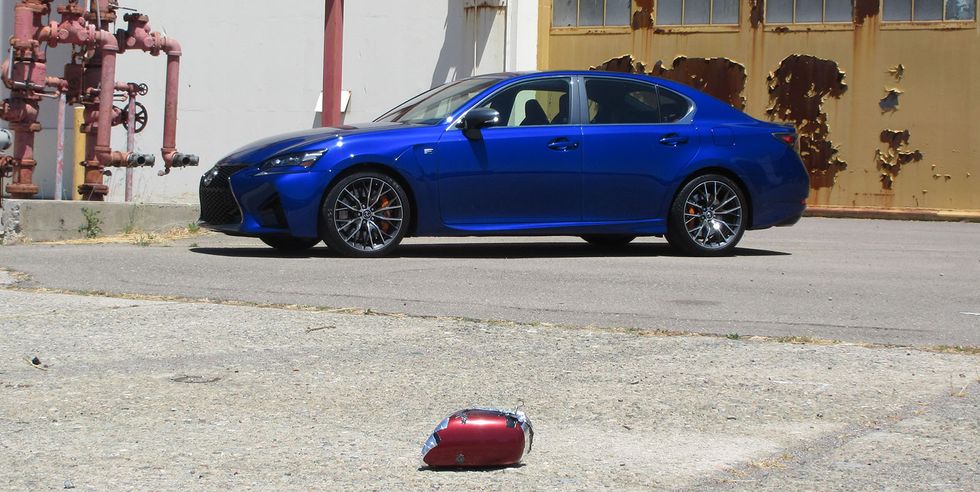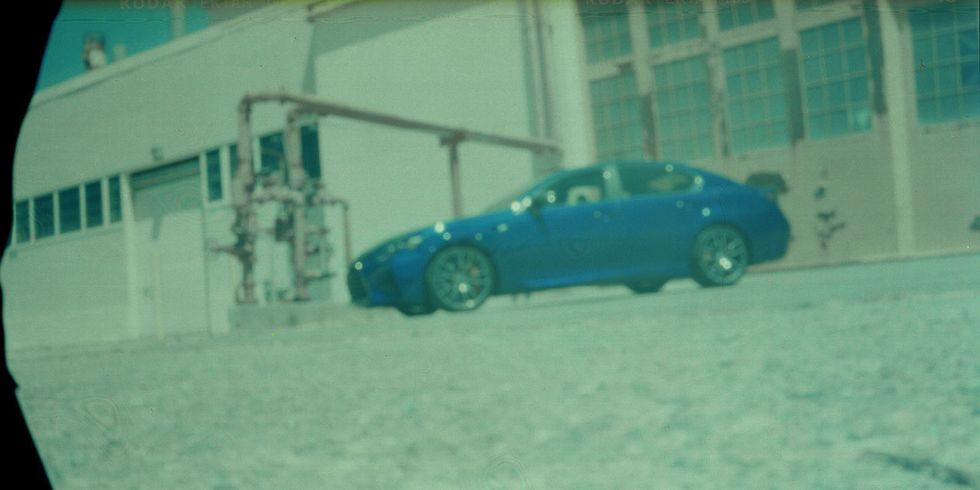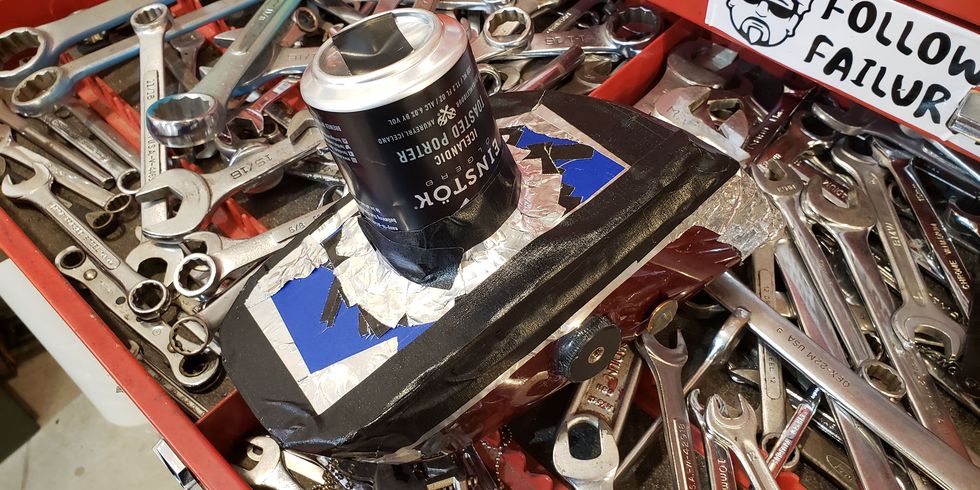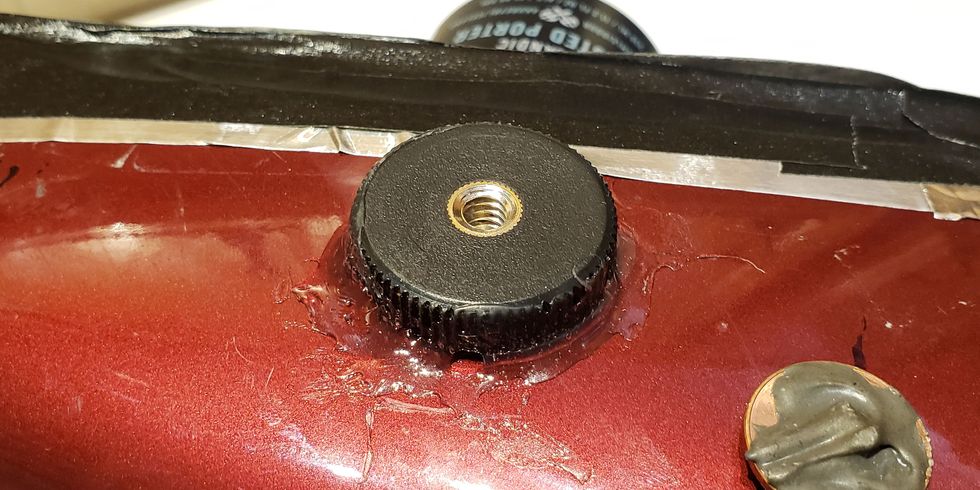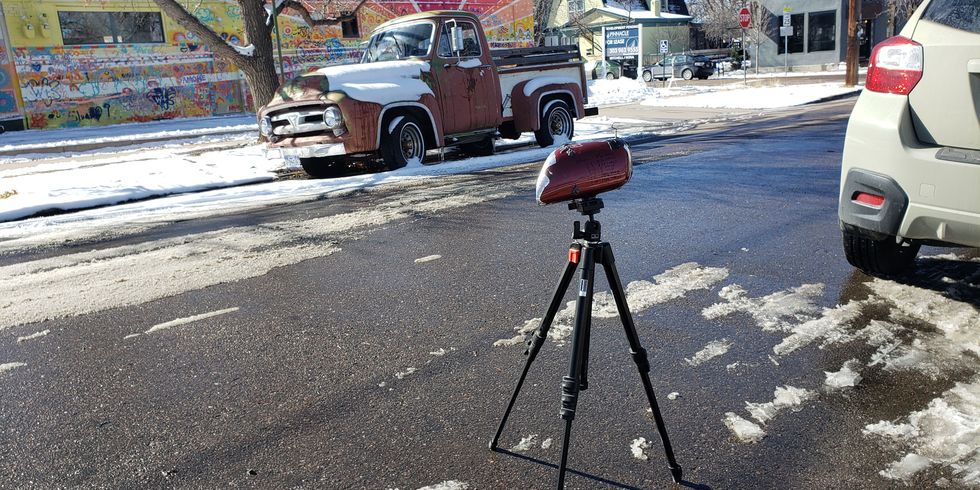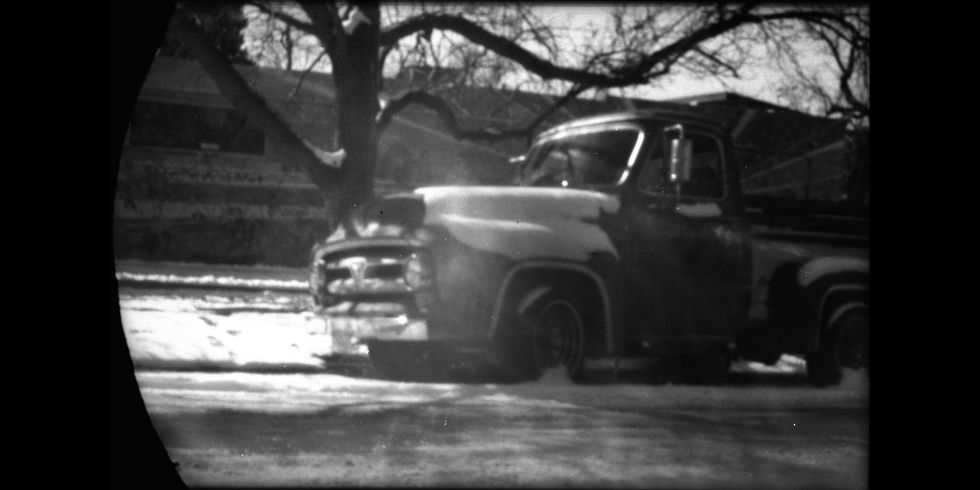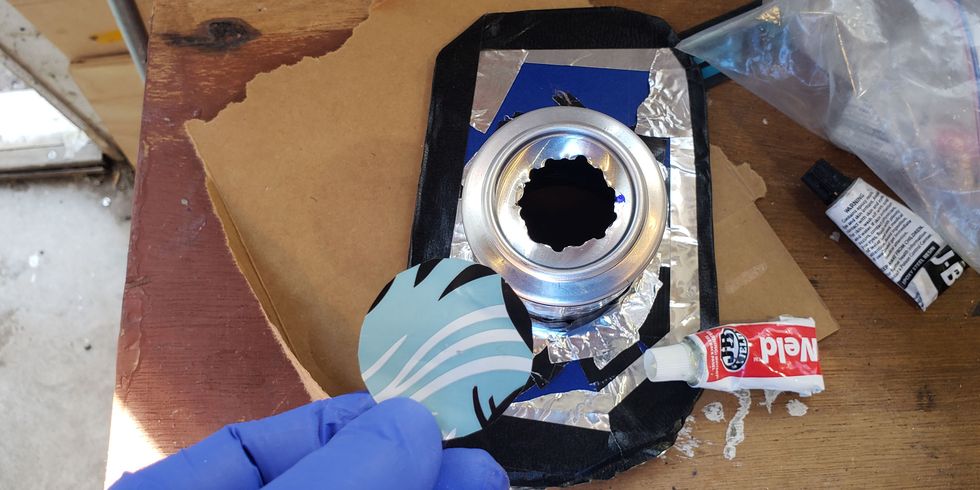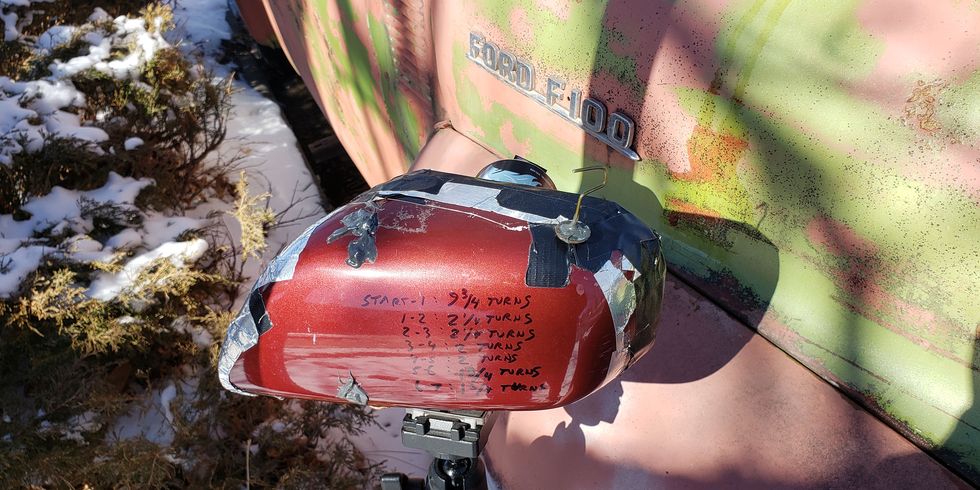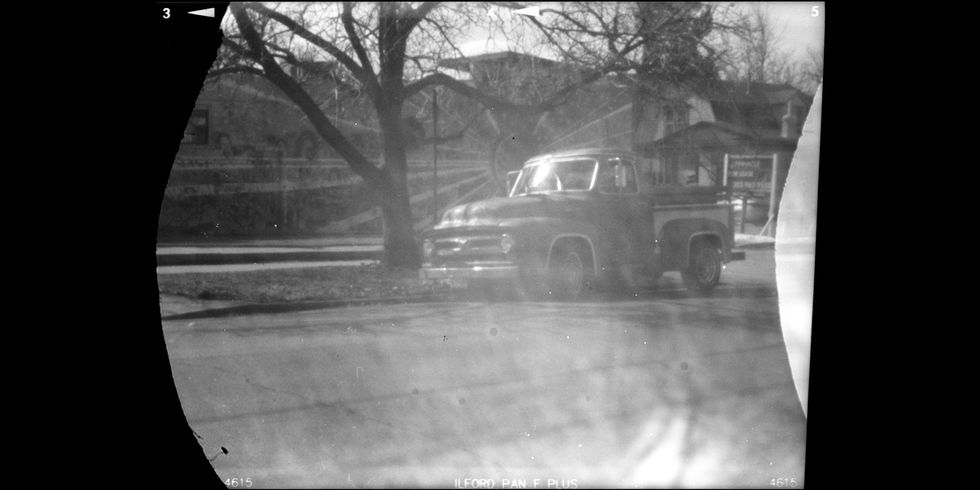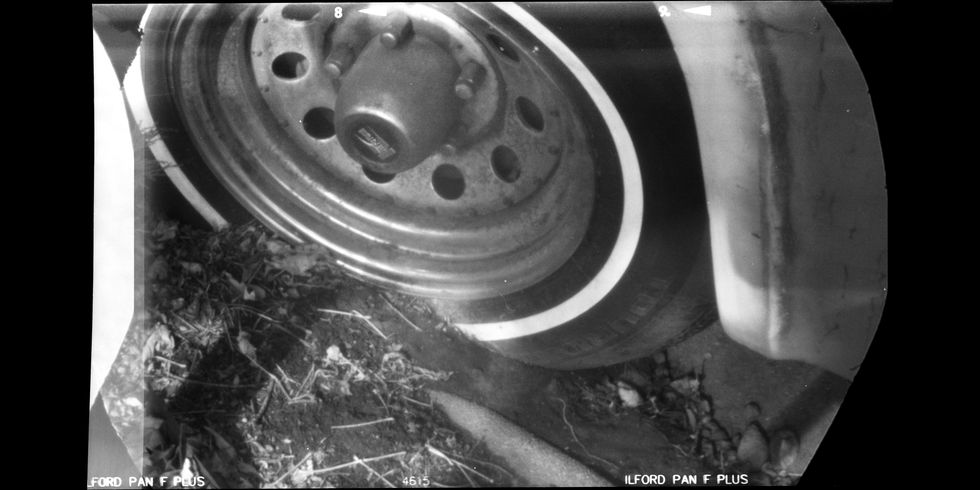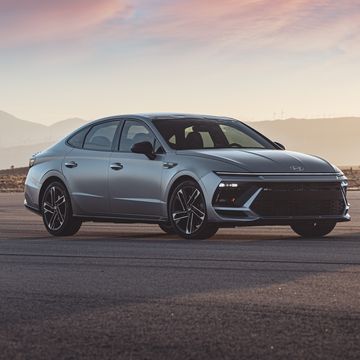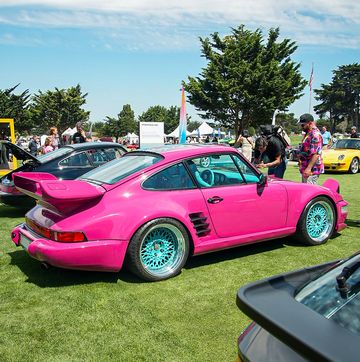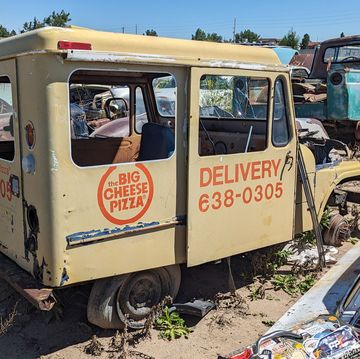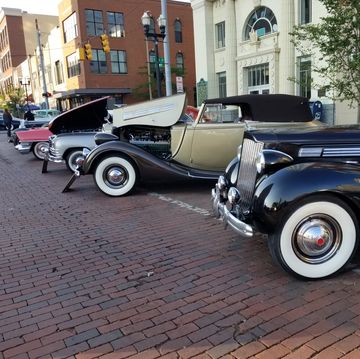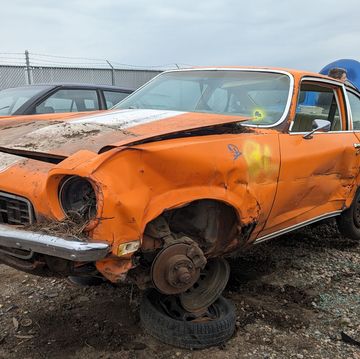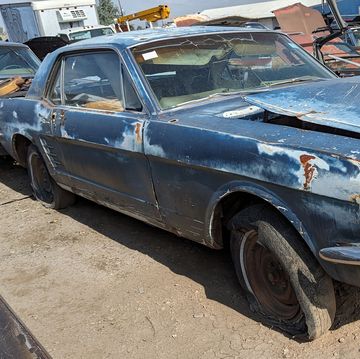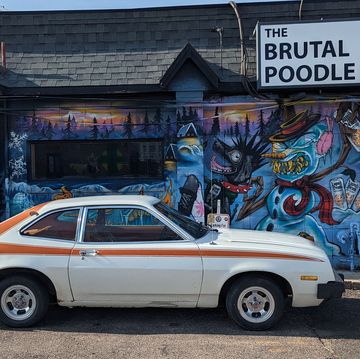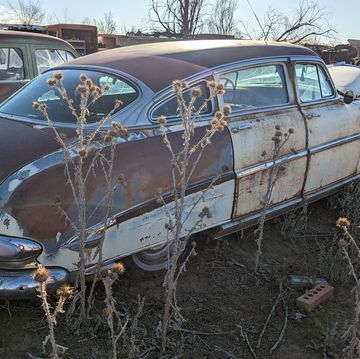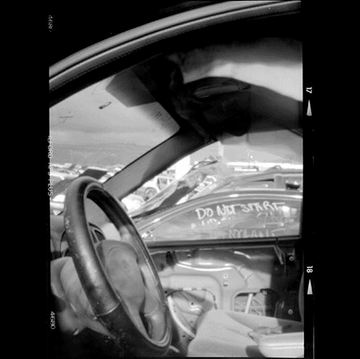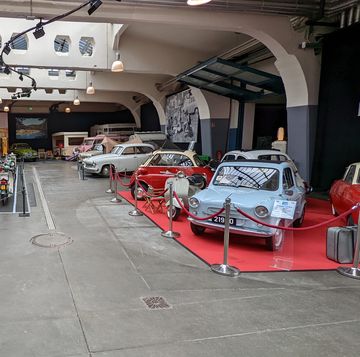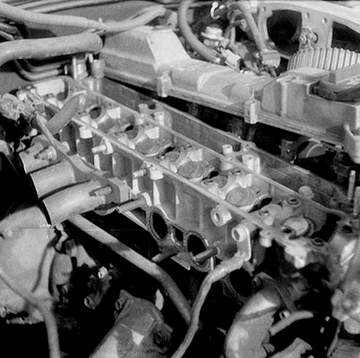Not being satisfied with shooting car photographs with cameras that were state-of-the-art during the war—that is, the Spanish-American war—I built a pinhole camera out of the side mirror from a 2002 Toyota Camry sedan. This worked just fine as a demonstration of Field Expedient Engineering, but the CamryMirrorCam™ has spent a few years sitting in my office and I decided to upgrade it in order to document the 1953 Ford F-100 slowly decaying on a street in my South Denver neighborhood. Here's how that went.
CamryMirrorCam™ v1.0 was built out of scavenged stuff with substandard tools while I was visiting the family home on the Island That Rust Forgot, so there were some compromises in its design and execution. The main problems were the pinhole lens with a too-large diameter and the lack of a tripod mount. Still, you can always set the thing on the ground and walk away for a while, which is what I did.
This worked well enough, but now I've moved through CamryMirrorCam™ v2.0 and v3.0, and there was just one appropriate subject: the 1953 Ford F-100 that serves as something of a street-parked memorial to its deceased owner.
Pinhole cameras don't have lenses made of glass or plastic; instead, a tiny hole allows light to reach the film. The smaller the hole and the greater the distance between hole and film, the sharper the resulting image… but the trade-off is longer exposure times, which can stretch to minutes, hours, or years (depending on how serious you are about your pinhole photography). So, I removed the original "lens" made from the sawn-off end of a Pabst Blue Ribbon can and made one from a longer segment of a can formerly filled with tasty Einstök Icelandic Toasted Porter. Then I used a fairly sharp icepick to make a pretty small hole in the end of the can.
After that, a tripod mount salvaged from my personal camera junkyard and attached to the Camry mirror housing with a generous application of Shoe Goo made it possible to put the CamryMirrorCam™ on a real tripod. Remember, serious photographers use Whitworth threads on their tripod mounts!
Then I put the camera on a tripod and set it up across the street from the F-100. There's a lot of guesswork involved with pinhole photography, but exposure times of 30 to 90 seconds worked well enough here.
After developing the film, I saw that the results with CamryMirrorCam™ v2.0 were sharper than what I'd seen with v1.0, but still needed some improvement.
So, I cut a hole in the end of the Einstök can, then glued a disc of thinner aluminum from the side of another Einstök can over the hole. After that, I used a sewing needle to poke a smaller pinhole, for improved sharpness and extra-hip long exposure times.
The advantage of the pinhole camera is the near-infinite depth of field, which means that objects a quarter-inch from the camera will be in focus just as well as objects miles away.
CamryMirrorCam™ v3.0 did, in fact, produce sharper images than the previous iterations, and you'll see the proof in the gallery below. What's next? Maybe CamryMirrorCam™ v4.0, with real shutter and glass lens.

